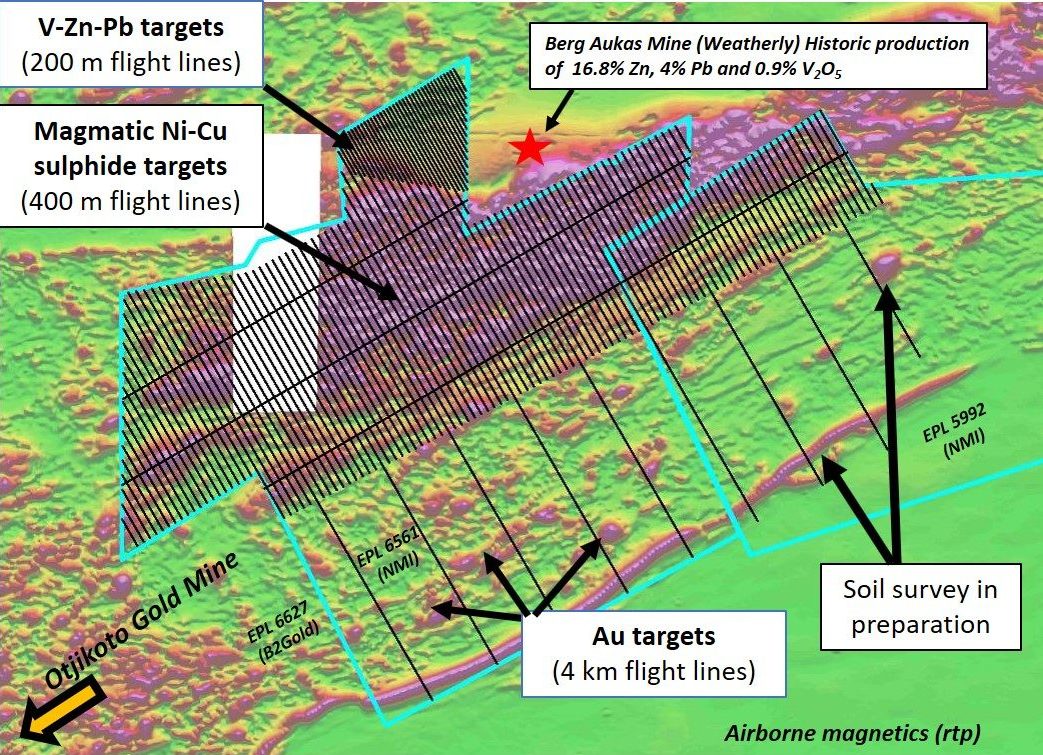Grootfontein is an early stage conceptual target based on geophysical and historical evidence for a large buried mafic-ultramafic intrusive complex. It is a poorly explored geological complex due to the extensive cover of Kalahari sands and calcrete.
Based on historic drill holes and airborne magnetic survey interpretations, Grootfontein constitutes a mafic complex covering 360 km² with the potential to host magmatic copper-nickel deposits as cumulates or late magmatic disseminations and stockworks. Previous work by Ongopolo Mining proved that the main intrusive phases are depleted in nickel and copper. The metals were likely fractionated as sulphides during the intrusive phase, gravitationally accumulated in the magma and intruded in the adjacent, pre-existing rocks. Following geological models for classic mafic hosted copper-nickel deposits such as Norilsk and Voisey’s Bay, sulphidization by scavenging of sulphur from country rocks and tectono-magmatic concentration of the sulphide-rich melts are the key for the formation of these types of magmatic copper nickel deposits. Only two shallow drill fences (total of 1,386 m) were drilled by Anglo American in 1988 leaving 55 km of strike length untested.
There is also a potential for Mississippi Valley-type lead-zinc deposits that may be highly enriched in vanadium immediately north of the mafic complex, as demonstrated by the near-by Berg Aukas deposit. Berg Aukas is a former producing mine which according to historical records, produced 1.6 Mt of ore grading 16.77% Zn, 4.04% Pb and 0.93% V2O5 during the period 1967-1975. The Grootfontein project area hosts favorable carbonate stratigraphy for this deposit type immediately west of Berg Aukas.
Thirdly, much of the southern portion of the project area is considered prospective for gold, based on the premise that extensions of the Okonguarri Formation which hosts the Otjikoto and Navachaab gold mines, trends through the area.
The Company is planning to fly a combined airborne electromagnetic-magnetic survey in April of 2019 which would be effective in detecting associated sulphide mineralization with these deposit types, and to conduct targeted soil sample surveys over magnetic anomalies that may be associated with gold mineralization.

